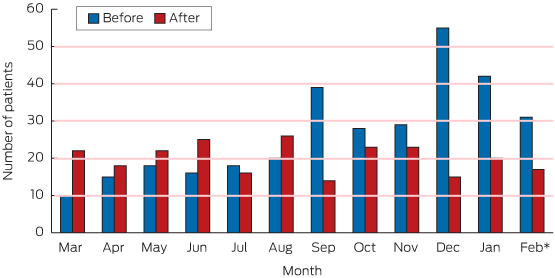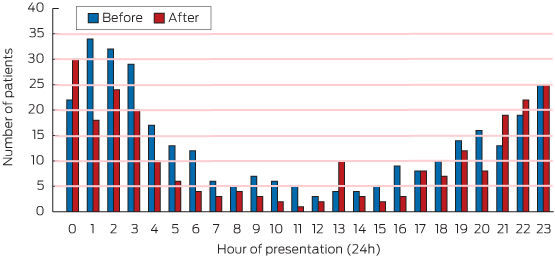New research from St Vincent’s Hospital clearly shows how ineffective Sydney’s “lockout” restrictions are, but advocates continue to avoid the truth.
Despite self-vindicating media emerging that the research “proves” the trade restrictions – often incorrectly generalised as the ‘lockout laws’ – have worked to fix violence on the streets, the study in fact shows lockouts have done little or nothing.
St Vincent’s Hospital, the major trauma and teaching hospital in the Sydney CBD Entertainment Precinct, studied data from its Emergency Department Information System (EDIS). Importantly, data used was on ED incidents related to alcohol use – defined as: serious assault, vehicular and pedestrian injuries, and falls from height.
 One of the main points coming from commentary on the research is the drop in triage categories 1 and 2 (seriously or critically injured) during the ‘High Alcohol Time’ (HAT) of 6pm Friday to 6am Sunday. Alcohol involves an average of 9.1 per cent of all cases during HAT, compared with 3.1 per cent at other times.
One of the main points coming from commentary on the research is the drop in triage categories 1 and 2 (seriously or critically injured) during the ‘High Alcohol Time’ (HAT) of 6pm Friday to 6am Sunday. Alcohol involves an average of 9.1 per cent of all cases during HAT, compared with 3.1 per cent at other times.
This reduction has been championed as proof of the success, coming in at 24.3 per cent.
What is not being mentioned, is the overall drop in ED admissions across the entire week, is 24.4 per cent.
Further analysis of the data shows some other hidden points of significance:
 The time-frame where the 1:30 lockout should be most effective – between 1am and 3am – the average drop in admissions is 28 per cent
The time-frame where the 1:30 lockout should be most effective – between 1am and 3am – the average drop in admissions is 28 per cent- The time-frame prior to the lockouts – 9pm to midnight – saw an average increase in admissions of 25 per cent
The published research noted this 25 per cent increase before midnight as “small”, although actually higher than the reduction being praised.
St Vincent’s emergency department director, Professor Gordian Fulde, who led the study, made several relevant points in the findings.
- The study was determining impacts on emergency department attendances due to “changes to liquor licensing regulations” – not on the efficacy of individual measures, which it noted as including:
- increased police presence and monitoring
- ID scanners
- Sharing of patron exclusion information by venues
- 1:30am lockout, 3am close, no shots after midnight
- “Further, it was beyond the scope of our study to correct for potentially relevant demographic or ecological variables during the period of the study, such as population volumes.”
This last speaks to the true flaw in proclaiming success from the trade restrictions (especially lockouts) as an average drop in incidents during the critical HAT period of just 24 per cent, in light of the catastrophic reduction of up to 85 per cent in patronage being reported, is more relevant as proof of a failed policy.
If a business was to increase costs by 85 per cent to achieve a 24 per cent increase in trade, the measure would surely be dropped prudently. If such a measure put the business into financial ruin within two years, it would be seen as a clear-cut case of poor management.
Poignantly, Professor Fulde noted that determining which specific measures were making any difference “was critical”. The huge, anomalous reduction seen in the December before and after figures (54 versus 15) are very likely the result of the police vigil that blanketed Sydney and Kings Cross late last year.
One of the most commonly criticised aspects of the ‘lockout’ zones is the potential for displacement to neighbouring areas. This potential is frequently then used to justify State-wide introduction – as seen in the short-sighted argument being made in Queensland.
Evidence against the greater roll-out can be seen in the ten-year study done on the efficacy of lockouts in the regional Victorian town of Ballarat, where displaced patrons are less able to go outside the lockout zone to circumvent the law.
Ballarat introduced the practise in mid-2003, and the study, looking at ED admissions between 1999 and 2009, concluded: no discernible long-term impact.
In the meantime, in Sydney, the entertainment precinct designed to be the 24-hour destination for late-night revellers and international visitors, is dead, and rapidly becoming another gentrified city fringe, with no discernible replacement on offer.







 The time-frame where the 1:30 lockout should be most effective – between 1am and 3am – the average drop in admissions is 28 per cent
The time-frame where the 1:30 lockout should be most effective – between 1am and 3am – the average drop in admissions is 28 per cent